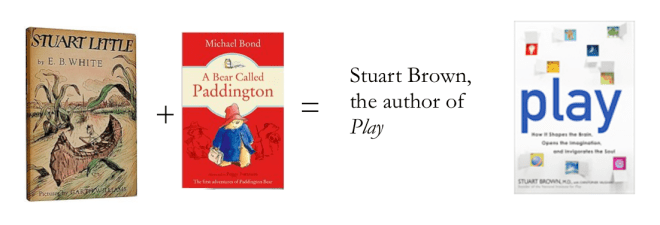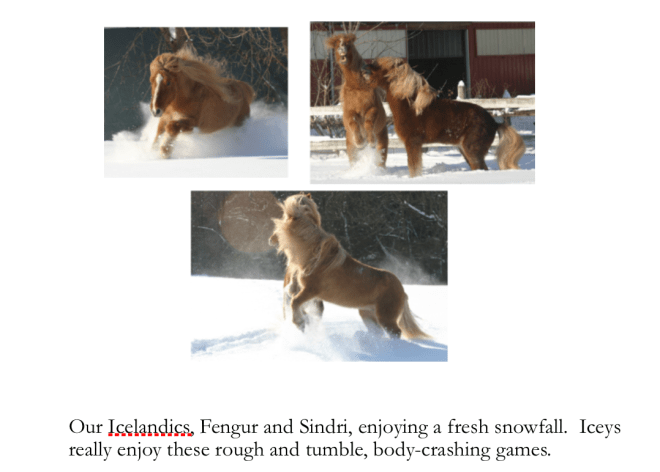JOY FULL Horses: Ten Things You Should Know About Cues: Number 9.) You Can’t Not Cue: Part 8 of 12
More Questions
In the previous posts I looked at the components that go into creating clicker “super glue”. This discussion brings us back to questions, and that’s getting us closer to returning to Poco, the ear-shy horse I introduced you to at the beginning of this unit.
There are many threads that weave through my work. What is common to all of them are questions. In the sciences you are trained to ask questions. You aren’t there simply to regurgitate to others what is already known. Your role is to explore, investigate and expand upon what is already known.
In archaeology a portion of a site that is being excavated is set aside for a future generation to uncover. The belief is that the methods of exploration will advance, opening up the possibility that more can be learned by waiting for those techniques.
The expression: “we are standing on the shoulders of giants” holds true in every field. Sometimes we may laugh at what people before us have believed. We may think, what an absurd notion! How could people possibly have believed that!? But those absurd notions were the stepping stones that brought us to our current understanding. And the beliefs that we hold today are simply more stepping stones taking us to the next “greatest thing since sliced bread”.
Jaak Pansepp identified seven core affective systems. (Refer to Affective Neuroscience: Published Jan. 17, 2016: https://theclickercenterblog.com/2016/01/17/)
The SEEKING system was one of the seven, and it turns out it plays a role in the other six. We cannot help but be curious and exploratory. It is built into the ancient networks of our brain. As Panksepp describes it, “an infant SEEKS with no set goal.”
Creativity is a core driver. We ask questions because we are curious. We want to know what sits beyond the horizon whether that horizon is the physical or metaphorical. We SEEK to know more.
Questions can take us out past the horizon line, and they can also take us inside to an exploration of our private space. Here the questions become even more important because we cannot directly investigate these private realms.
Levels of Analysis
Panksepp asks questions at the level of individual neurons and the systems that they form within the brain. I have been trained to ask questions at a different level of analysis. That’s a phrase I learned from Dr. Susan Friedman. (behaviorworks.org) Dr. Friedman is a behavioral analyst. She uses a wonderful metaphor of a viewing scope. What is the lens focused on – the distant horizon or something much closer? What is the level of analysis that interests you?
My focus is on balance, but I have to go inside to find the answers to the questions I ask.
Going Inside
What does going inside mean? If I ask you to raise your arm, I have an overall understanding of how human anatomy works and what muscles, bones, and tendons are involved, but that doesn’t tell me how YOU lift your arm.
I could watch what you do, but that gives me only partial information. I could ask you directly, but how many of us know how we do something so basic? We lift our arms without thinking about HOW we are doing it.
So if I want to know how YOU lift your arm, I need to ask questions at a different level of analysis. I might rest my arm on your shoulder so I can add the tactile information to all the other data I’m been collecting.
I will need to know how to silence all the other answers I’ve gotten from asking similar questions of others. I can’t assume that your answer will be the same as theirs. I ask my questions without knowing the answer.
I observe without judgment.
And I observe through questions.
I feel the movement of your arm lifting under my hand. I could be satisfied with thinking:
Here it lifts. Here it stops. Here her shoulder moves. Here her breath is held.
Instead I want to keep putting a question mark at the end of each of these sentences.
How is she lifting her arm? Is it anything to do with what I feel under my hands? How does her arm move? Where does the movement begin? Where does the movement stop? Is it the same on both sides?
Adding a Question Mark – Feldenkrais Work
Turning your observations into questions comes via Mia Segal, a Feldenkrais practitioner. I wrote about her work earlier. (See Part 2: Unit 3, Chapter 3: Feldenkrais Work: Published June 9,2016:https://theclickercenterblog.com/2016/06/09/)
In the horse world many of us are aware of the Feldenkrais Awareness Through Movement method because of Linda Tellington-Jones. Her TT.E.A.M training evolved out of Moshe Feldenkrais’ work for people. Feldenkrais’ work is an exploration of movement in which an individual is guided through questions towards greater self-awareness and well being.
Asking Not Telling
Applied to horses what evolves out of this type of exploration is a question that slices straight through to your core belief system. It is this:
Are you telling or are you asking?
You can train with a clicker and treats, but if you are telling, you aren’t playing, and you most certainly aren’t listening.
Suppose you want your horse to pick up a hind foot. You can use your clicker and treats to “tell” him to do what you want.
“Shift your weight over off your left hind.” Click then treat.
“Unweight your left hind.” Click then treat.
“Unweight it a bit more.” Click then treat.
“Pick up your left foot.” Click then treat.
“Pick it up higher.” Click then treat.
“Hold it still while I clean your foot.” Click then treat.
You’ve been polite, but you’ve still told your horse what to do. You’ve picked his foot up, and you’re holding it where you always hold a horse’s foot. But suppose for this horse’s conformation that means his hock is now under pressure.
The longer you hold his foot up, the more uncomfortable he’s going to become. He’ll start to fuss and try to pull his foot away. You’ve been told you have to hold on. If you let go, he’ll learn he can pull away, and he’ll never hold his foot up for you. So you hold on.
He becomes more uncomfortable and pretty soon your wrestling match has disintegrated into a full out battle. No matter the outcome neither of you are winners because the whole process could have been so very different. Here’s how:
Suppose you ask for his foot instead through a series of questions. Now it becomes:
“How do you shift your weight over off your left hind?” Click then treat as he responds with an answer.
“Can you unweight your left hind?” Yes. Click then treat.
“Can you unweight it a bit more?” Yes. Click then treat.
“How do you pick up your left foot?” Follow his movement through the lift. Click then treat.
“Can you pick it up higher?” Yes. Click then treat.
“Where can you comfortably hold your foot?” Click then treat as you find the spot together.
As you ask these questions, you’ll be listening to your horse. You’ll feel how his leg unfolds as he lifts it into your hand. Instead of holding it in a position that stresses his joints, you’ll let him show you where he can hold it comfortably. Instead of fussing, now you have a horse who knows he’ll be listened to.
The click and the treat helps to guide him through the questions you’re asking. The questions will give you the lesson.
The Questions – The Lesson
The Questions:
How do I feel it in my hands?
Where does the movement begin?
Where does it stop?
How does it stop?
When does it stop?
How does it begin again?
What changes with repetition?
Is it the same on both sides?
What changes under my hands?
How could it be done differently?
(Note: These questions are from Mia Segal’s youtube video: The Art of the Question.)
Your Homework
Here’s something to play with over the next few days. Put question marks at the end of your training requests, and then make note of the changes you see in your horse. I’ll end with a question. What changes in your relationship as you ask questions and learn to listen deeply for the answers?
Coming Next: The Teachers We Get Are The Teachers We Need
Remember, if you are new to the JOY Full Horse blog, click on the JOY Full Horses tab at the top of this page to find the full table of contents and links to each of the articles I have published so far.
I hope you will want to share these articles by sending links to this blog to your friends. But please remember this is copyrighted material. All rights are reserved. Please do not copy any of the “JOY Full Horses” articles without first getting written permission from Alexandra Kurland, via theclickercenter.com
Also note: these articles are not intended as an instruction guide for introducing your horse to clicker training. If you are new to clicker training and you are looking for how-to instructions, you will find what you need at my web sites:


 Affective Neuroscience
Affective Neuroscience

 than herself. One of her babies had lost it’s grip. She paused just long enough to give it time to reattach itself to her belly, and then she scaled the cement wall, ran across the wooden planks of the walkway at the back of the composter, and disappeared into the safety of the mouse tunnels she must have known she would find on the other side.
than herself. One of her babies had lost it’s grip. She paused just long enough to give it time to reattach itself to her belly, and then she scaled the cement wall, ran across the wooden planks of the walkway at the back of the composter, and disappeared into the safety of the mouse tunnels she must have known she would find on the other side.






